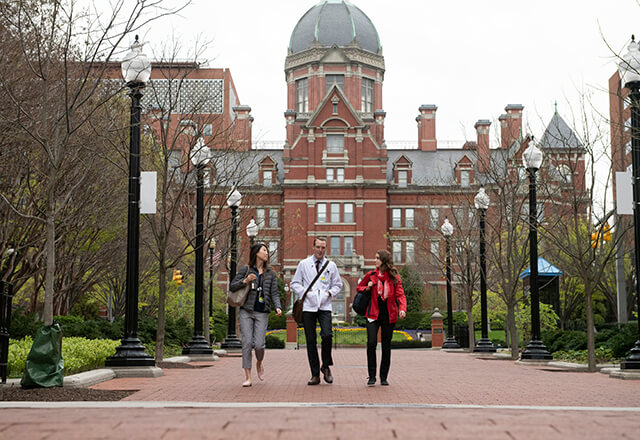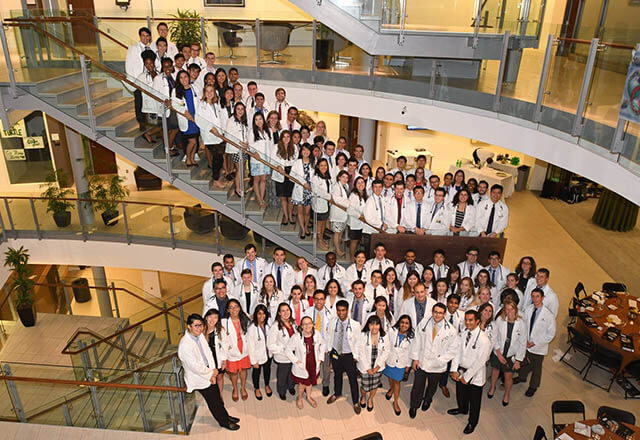Year Two Overview
Year Two is similar to Year One in that the two main courses continue – Genes to Society and Longitudinal Ambulatory Clerkship. In addition, students continue to work on their Scholarly Concentration projects, with an aim toward presentation at Medical Student Research Day in January. The curriculum builds upon itself with increasing sophistication. Topics learned in Year One are revisited at a higher level and in the context of yet another organ system.
August Through February
The Genes to Society course, begun in the winter of Year One, continues through February of Year Two. Genes to Society is a systems‐based course that teaches each organ system around the ideas of genetics, biology, physiology, and the impact that social, community and environmental issues have on the health and well‐being of individuals.
TIME courses in Year Two are focused on Substance Use Disorders, Patient Safety and End‐of‐Life/Palliative Care. During these weeks, the students have the opportunity to break away from the organ‐based class work and focus on advanced clinical skills, simulation experiences and their scholarly concentration.
March
The month of March has been reserved for Transition to the Wards. As a three‐week course, Transition to the Wards provides the skills medical students need upon entering clerkships. This course includes integrative problem‐based learning modules to consolidate and reinforce lessons of the first two years and introduces specific content in preparation for the clerkships. This content includes ECGs, radiographs, clinical pathology, safety, pharmacy, information systems and community resources.
April
In April of Year Two, the students embark on clerkships. Starting in Year Two, the curriculum allows the students plenty of flexibility in fulfilling the core clerkships along with exploring electives that might be of interest to them. The core clerkships are Emergency Medicine, Internal Medicine, Surgery, Pediatrics, Women’s Health, Neurology, and Psychiatry.


